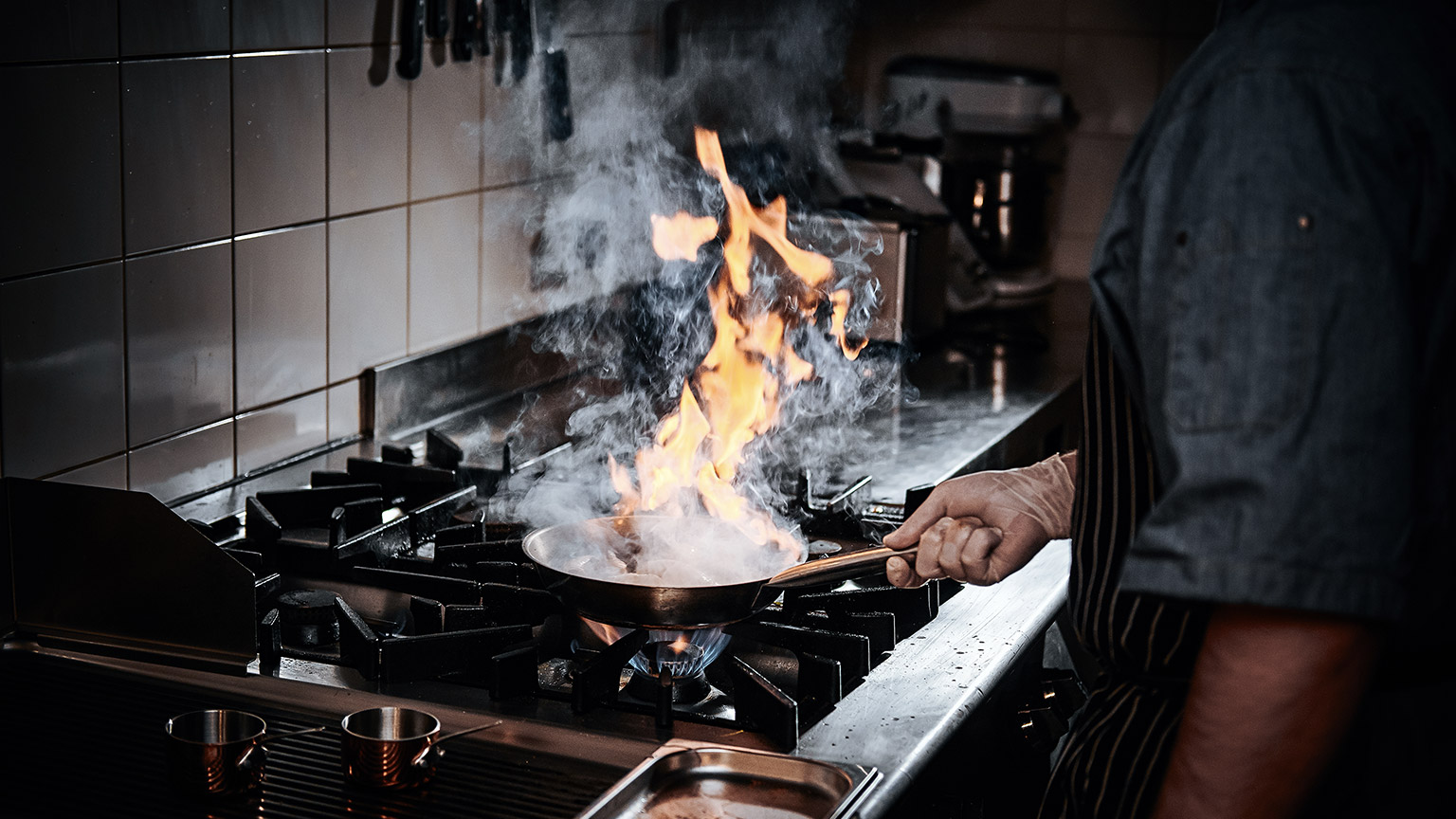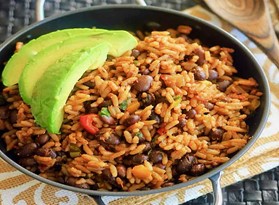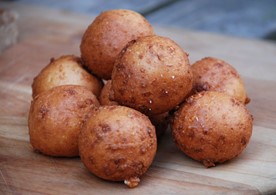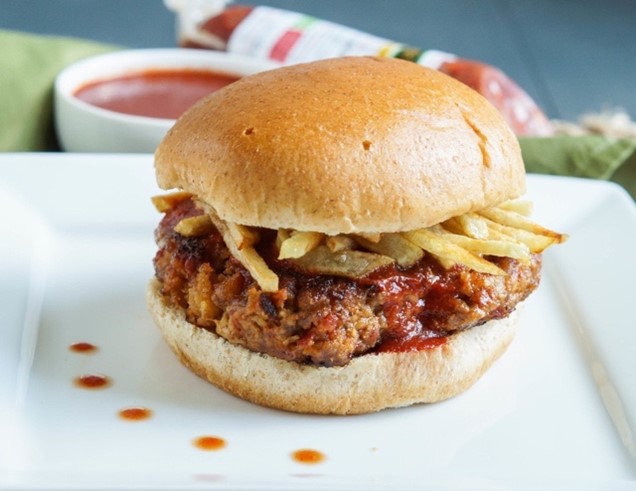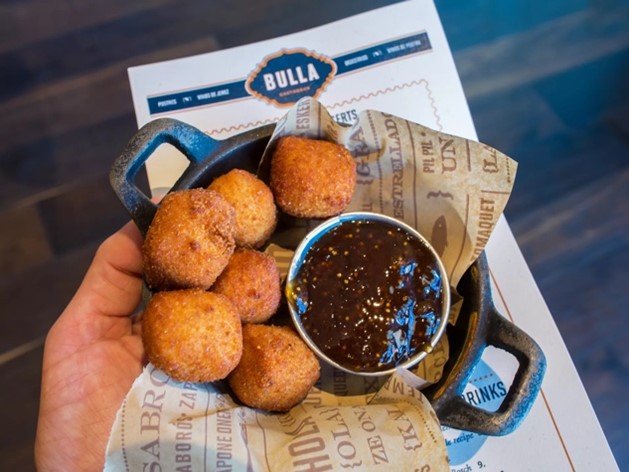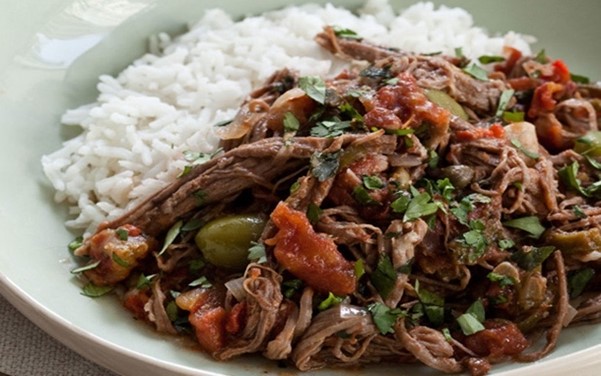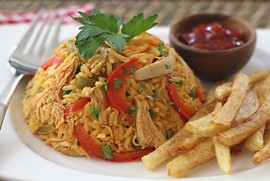We are interested in definition 2, describing people moving from one place to another. Note the 2 sub-terms: emigration (people moving away from a place) and immigration (people moving to a place).
(Migration, n.d.)
Watch
Exercise 14
- Think about yourself and your family. How did you get to be in New Zealand? Did you or previous generations of your family move here from elsewhere? Did you or your family move to where you live now from another part of the country? What cultural links do you have to places other than where you live right now?
- Now pair up with a classmate from a different cultural background (different country of origin, city or region) and discuss how their food habits differ from yours. Note some key points below.
According to the United Nations Foundation, more than 258 million people are living somewhere other than in the country they were born in, a number which has grown by 49% since 2000. (United Nations Foundation, 2018). This number represents 3.4% of the global population.
Exercise 15
Why do people move from one place to another?
There are many reasons for this. Look online for key reasons and examples of people migrating from one place to another. Find and write down some key examples of significant migrations in recent times.
Migration Case Study - Cuba/Florida
One example of a significant recent migration is that of Cuban people moving to the USA (in particular to Miami in Florida).
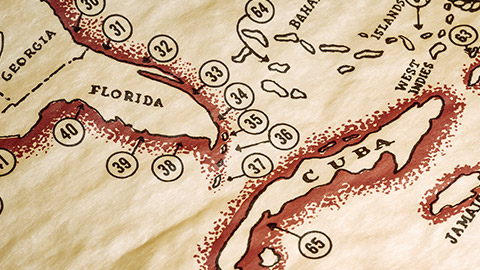
What Happened?
There have been several waves of emigration from Cuba to the United States – at different times and for different reasons. Some of the significant movements were:
- pre-1958: migrants moved to Miami mainly due to poverty at home. In 1958 there were around 10,000 Cubans living in Miami
- 1959 – 1973: as a result of the Cuban Revolution, which saw the Communists of Fidel Castro seize power, up to 500,000 Cubans left Cuba for Miami, many of them to establish businesses.
- 1974 onwards: Cubans continue to arrive in Miami, sometimes as an entry point to other destinations in Florida or the USA, and mainly for economic reasons. As of 2012 there were 1.2 million Cubans living in the Miami area. (InterExchange.org, n.d.)
Effect on Miami
Miami now has a large and significant Cuban population, and has areas known as “Little Havana”, home to Cuban festivals, shops, restaurants, theatres and street food where Spanish is widely spoken.
Exercise 16
We have looked at one example from the modern era of migration affecting how and what people eat, but there are countless other examples. Search online to find other significant migration events in which food plays a part in telling the story. Remember, migration is not only moving from one country to another, it could also be moving from one city to another, or one part of the country to another.
Self-Directed Learning
New Zealand is a country of many migrant groups. Research the influence of migration on food choices and availability in New Zealand restaurants and supermarkets. What food options are there in your local community? Are there any interesting gaps (for a new business opportunity)?
‘Around the world’ sections will occur regularly across this module. They will be extremely useful for you in researching and preparing for your assessment.
Each one will have a slightly different focus, and will include guidance for you to help focus your research. Allow up to 2 hours for each one (this includes your SDL for the day).
China
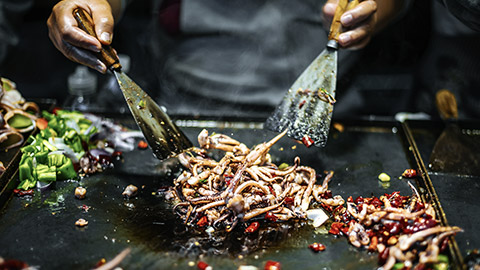
- Identify any distinct food areas within China
- Which foods are associated with regional and national Chinese identity?
- What are the most common kinds of dishes in Chinese cuisine?
- Are there any foods or dishes that non-Chinese people would find strange or exotic?
- What is the influence of migration on food in Chinese culture?
- If possible, try making a Chinese dish, that has been influenced by migration, at home
(War, n.d.)
Wars have been a part of human societies since pre-historic times, with evidence of violent conflicts dating back at least 13,000 years. (British Museum, 2017)
In this section we will look at how war has affected how and what people eat as a result of conflict, and what changes to food production methods and food technology can be attributed to this activity. Even though war has been present throughout all of recorded human history, we will focus on the effect of wars conducted in the modern era (e.g. since American war of independence in 1775 as a guide), as these have most relevance to how and what we eat today.
Watch
Effects of War
Whatever the cause of wars, they have a huge and traumatic effect on the populations concerned: from the killing of civilians and soldiers, the destruction of land and homes, the devastation of industries and lifestyles to the displacement of entire groups of people. One of the most noticeable effects is the change to what food is available, in what quantities and how it is distributed.
Exercise 17
Thinking about some of the main effects that war can have on societies, detail some of the specific impacts they may have on what and how people eat. You can start to collect specific examples from history to help explain.
Case Study: Rationing
Rationing is an effective method to ensure the equal distribution of limited food supplies, and was used in Britain during World War 2.
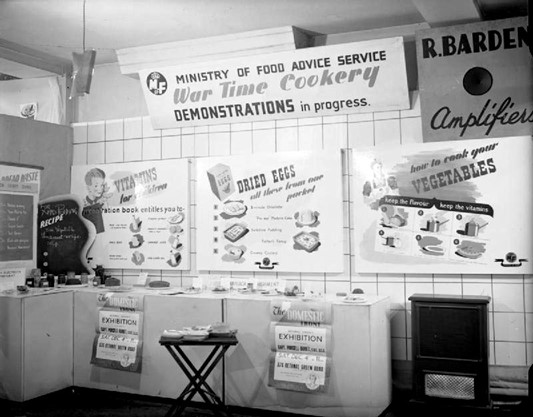
Introduction of rationing
After World War 1 the British government recognised the advice of scientists emphasising the link between diet and human health. Providing good nutrition was seen as vital in calculating how to ration out scarce food supplies and the Ministry of Food was created to do this.
The Ministry of Food published recipes and cooking leaflets and organised cooking demonstrations by well-known cooks, and the BBC broadcast cooking programmes.
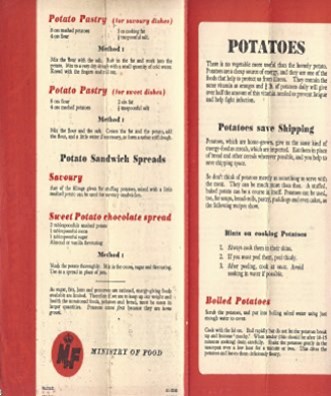
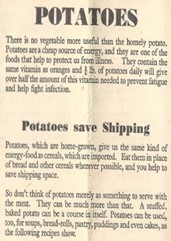
The Ministry of Food regulated how food retailers got their supplies – making sure they came from local producers to reduce distribution costs and save fuel. This reduced consumer choice and restricted what ingredients were available.

Ration Books and Coupons
Ration books were ready to be distributed within a week of war being declared in September 1939, and came into use around four months later. Ration books were issued to every man, woman and child, and coupons in the ration books entitled a person to purchase their allocated amount of a particular ingredient. Ration books were issued once a year.
Dietary requirements were accounted for in the ration book system, for example vegetarians could exchange their meat ration for extra cheese or something else (vegetables were not rationed)
Rationing was a democratic and equal way to ensure fairness in obtaining nutrition so everyone got enough food. Rationing applied to rich and poor alike, even to the Royal Family.
Some items were not rationed, including bread, salt and coffee. Other ingredients such as lemons and bananas were just not available at all. Oranges occasionally came in from the USA but only children were allowed to have them.
Extra nutrition was encouraged by campaigns such as the “Dig for Victory” posters which encouraged people to turn their gardens into vegetable plots. The Minister of Food said in 1941 “Every extra row of vegetables in allotments saves shipping – the battle on the kitchen front cannot be won without help from the kitchen garden”. (‘British Wartime Food’, 2011)
Key ingredients subject to rationing (weekly adult allowance)
| Item | Allowence | Item | Allowence |
|---|---|---|---|
| bacon & ham | 4 oz (115g) | sugar | 8 oz (230g) |
| other meat | equivalent of 2 chops | preserves | 1 lb (500g) every 2 months |
| butter | 2 oz (60g) | tea | 2 oz |
| cheese | 2 oz | eggs | 1 fresh (plus allowance of dried eggs) |
| margarine | 4 oz | sweets | 12 oz (345g) every 4 weeks |
| cooking flat | 4 oz | milk | 3 pints (1.7l) |
Rationing in World War 2
This was the initial allocation introduced in 1940. Eventually most food except fruit and vegetables were subject to rationing.

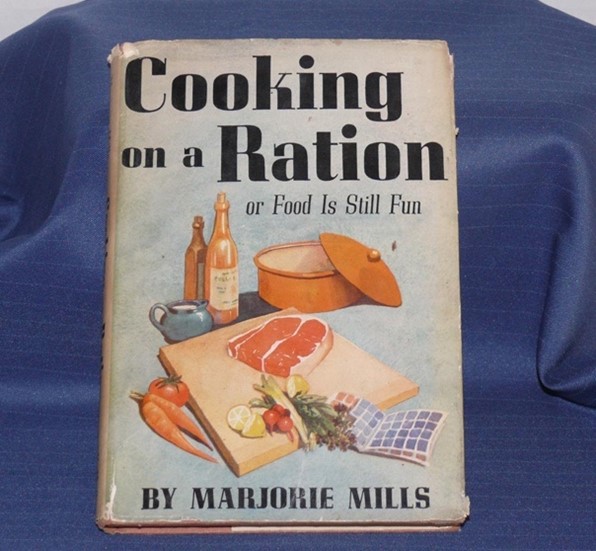
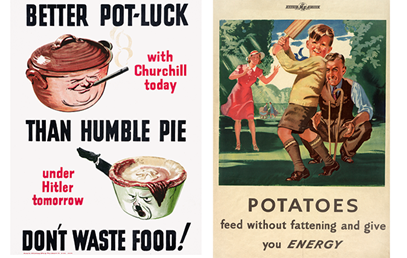
One of the best known WW2 dishes in Britain was the Lord Woolton Pie, created by the Head Chef of the Savoy and named after the Minster of Food. This was a cheap and filling pie with a filling of cheap vegetables in either a shortcrust pastry or topped with mashed potatoes.
Lord Woolton Pie (serves 4) (Jones & Bourke, n.d.)
Pastry:
- 225g wholemeal
- flour
- 2 tsp baking powder
- pinch salt
- 85g margarine or lard
- 110g cold mashed potato
- milk for glazing
Filling:
- 400g cauliflower, roughly chopped
- 400g parsnips, peeled and roughly chopped
- 400g carrots, peeled and roughly chopped
- 400g potatoes, peeled and chopped into bite size pieces
- 3 spring onions
- 1-2 tsp yeast extract
- 1 tbsp oatmeal
- 1 tbsp chopped parsley
- salt and pepper
- Make pastry adding a splash of water if needed.
- Put vegetables, yeast extract, rolled oats and seasoning in a pot, just covered with water. Simmer until most of the water has evaporated and the vegetables are tender.
- Put cooled vegetables into pie dish, top with parsley.
- Roll out pastry to cover top of pie dish. Glaze with milk and bake for 30 minutes.
- Serve with more green vegetables and gravy.
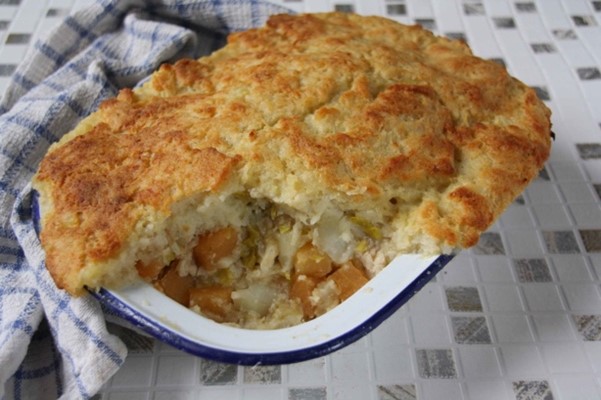

Key ingredient: Dehydrated eggs
Powdered, or dried eggs were available from 1942 after the rationing of fresh eggs and came from the USA and Canada. It could be used in many of the ways fresh eggs would be, such as scrambled or in cakes. It was pure dehydrated fresh egg and highly nutritious. It has the advantage of a long shelf life and light weight for transportation. It is still sold to this day.
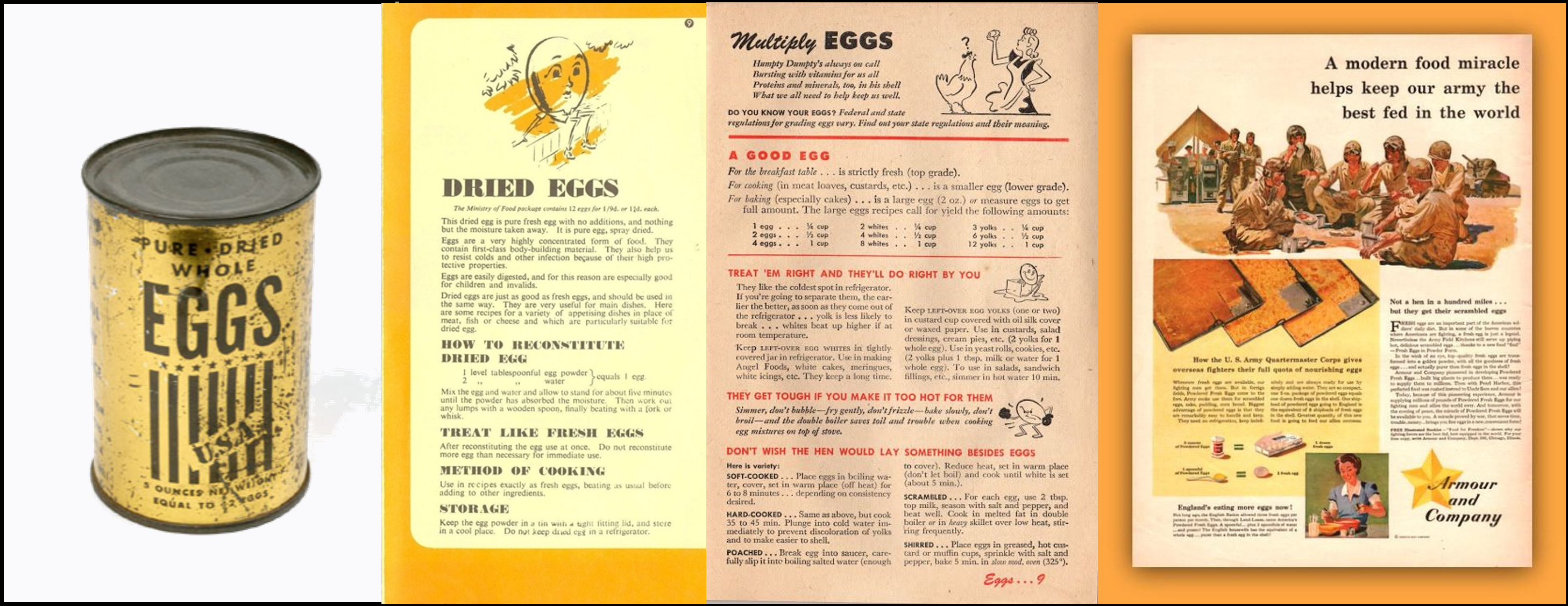
Self-Directed Learning
Make Lord Woolton Pie for friends or family. Or, if this is not possible price the ingredients to make it. Is it still an economical dish? If you make it, is it tasty? Note your findings and thoughts in your journal.
‘Around the world’ sections will occur regularly across this module. They will be extremely useful for you in researching and preparing for your assessment.
Each one will have a slightly different focus, and will include guidance for you to help focus your research. Allow up to 2 hours for each one (this includes your SDL for the day).
Vietnam

- Identify any distinct food areas within Vietnam
- Which foods are associated with regional and national Vietnamese identity?
- What are the most common kinds of dishes in Vietnamese cuisine?
- Are there any foods or dishes that non- Vietnamese people would find strange or exotic?
- What is the influence of war on food in Vietnamese culture?
- If possible, try making a Vietnamese dish, that has been influenced by war, at home
What are climate and geography?
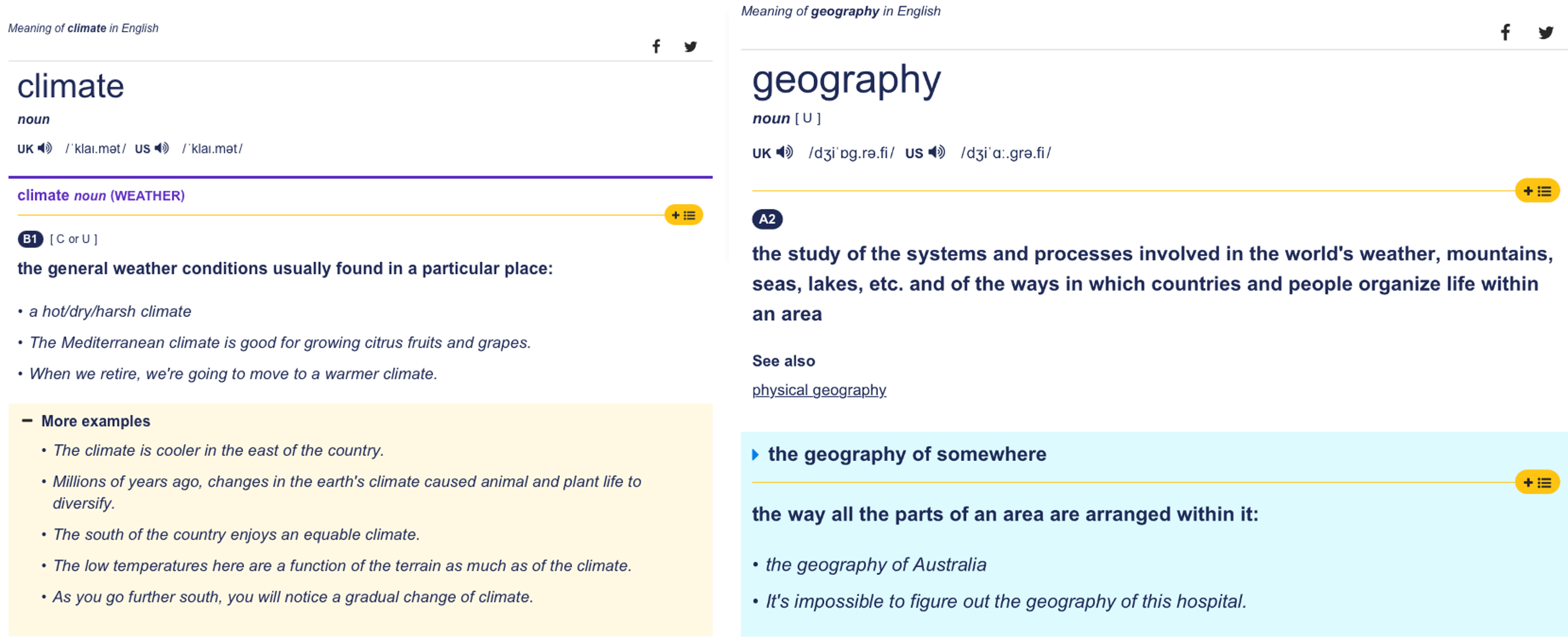
(Climate, n.d.), (Geography, n.d.)
Climate and geography have a very big impact on the food we eat, and results in the huge diversity of ingredients, cooking methods and dishes we see around the world.
Impact of climate on food
According to SciJinks.gov there are 5 distinct types of climate:
- Tropical
- Dry
- Temperate
- Continental
- Polar
Watch
Exercise 18
Find out what each of these climate types are like and summarise briefly.
- Tropical (and Sub-tropical)
- Dry
- Temperate
- Continental
- Polar
What are the types of climate are found in New Zealand?
(Note: when researching climate and geography facts please make sure your written work is expressed in metric measurements only (centimetres, metres, kilometres, degrees Celsius/Centigrade) – you may need to convert if your information source is from the US). Use the following links to find temperature conversions, height conversions and distance conversions:
Geographic zones
There is an endless variety of types of geography around the world, and many factors will affect exactly what can and cannot be grown in each area.
Crops need water, nutrients, sunlight and different temperatures to be successful, and all these ingredients vary from place to place. Growing the crops suitable to each area is important for economy and sustainability. Climate describes some of these factors – water, sunlight and temperature, but what about nutrients?
Nutrients for crops
Nutrients in the soil can be naturally occurring, but modern agricultural methods make use of artificial fertilisers to expand the variety and yield of crops. There are 3 main elements (primary nutrients) required for crops to grow, Nitrogen (N), Potassium (K), and Phosphorous (P) and a list of 11 other elements (secondary and micronutrients) also needed in smaller quantities (including Calcium (Ca), Magnesium (Mg), Iron (Fe) etc. The richer the soil in any particular area is in these elements, the less fertiliser is needed to be added. (University of California, Division of Agriculture and Natural Resources, n.d.)
Livestock requirements
Livestock (animals raised for food production) require food, water and space to grow, and are sensitive to temperature too. Certain types of animal are suited to different habitats and different types of food. Any deficiencies in available feed or water must be supplemented by the farmer.
What grows where?
www.businessinsider.com.au has identified a list of the 10 most important crops grown throughout the world. Research the main facts about each, noting where they are grown and what their growing needs are.
- Plantain
- Yam
- Sorghum
- Sweet Potato
- Soy
- Cassava
- Potato
- Rice
- Wheat
- Corn (maize)
(Goldschein, 2013)
(National Geographic Society, 2014)
(www.britannica.com)
(‘FAOSTAT’, n.d.)
Case Study - Moroccan Cuisine
Geography of Morocco

Morocco is in North Africa, neighboured by Algeria to the east and Western Sahara to the south. It has an extensive coast, with the Atlantic Ocean on its west and the Mediterranean Sea to its north. It is separated from Spain (mainland Europe) by the strait of Gibraltar, 13km at the closest points.
The interior of Morocco is mountainous, with the Atlas Mountains and the Rif Mountains dominating.
Between the Atlantic coast and the mountains there is a large area of fertile agricultural plains on the Gharb, which produces most of Morocco’s agricultural output.
In the south, the arid desert conditions see oasis areas of palm trees.(countryreports.org, n.d.)
Climate of Morocco
The northwest has a mild climate, with coastal regions experiencing a Mediterranean climate and the mountainous regions having a continental or alpine type climate. Around 95% of the Moroccan population lives in the northwest area.
The southeast of the country has a hot, arid, dry climate as it borders the Sahara Desert. (countryreports.org, n.d.)
Agriculture
Because of the variety of types of geography and climate experienced, Morocco is able to produce a wide range of agricultural products. Some of the key fruit and vegetable products grown in Morocco include:
- Wheat
- Potatoes
- Olives
- Citrus fruit
- Tomatoes
- Barley
- Onions
- Other fruit and vegetables
- Apples, watermelon, sugar, grapes, carrots, turnips, melons, beans, chillies, pumpkin and squash, figs, almonds, dates
Key animal products include:
- Eggs
- Chicken meat
- Beef
- Sheep meat
- Fish
(fao.org, n.d.)
Food Imports and Exports
Key food exports:
- Tomatoes
- Refined sugar
- Citrus fruit
- Vegetables
- Olives
- Potatoes
- Olive oil
- Fish
Key food imports:
- Wheat
- Maize (corn)
- Tropical fruits
- Coffee, tea and spices
(What Does Export? (2018), n.d.)
Cuisine of Morocco
With most of its population living in areas enjoying a Mediterranean climate, Moroccan food forms part of the Mediterranean diet. Main principles of the Mediterranean diet are:
- Daily eating: fresh fruit and vegetables, healthy fats (such as olive oil) and whole grains
- Weekly eating: fish, poultry, beans and eggs
- Occasional consumption of dairy products
- Infrequent eating of red meat
(Mediterranean Diet: A Heart-Healthy Eating Plan, 2019)
Moroccan Dishes
Morocco has a rich and varied cuisine which is enjoyed all around the world. In recent decades many dishes have become well-known for their flavour and spicing. Popular dishes in Morocco reflect the geography (Mediterranean diet) and climate (utilising what can be grown or caught locally).
- B’ssara - Soup made from dried broad beans, topped with olive oil and cumin. Served for breakfast with Moroccan bread.
- Tagine - “Tagine” is actually the name of the clay cooking vessel, with a shallow base and a conical lid which allows steam to condense and drip back into the base, keeping the dish moist. It also refers to the type of stews famous in Morocco and other North African countries. It can be made with lamb, chicken, beef or fish with lots of vegetables and pulses. There are also vegetarian and vegan versions. Characteristic flavourings include Moroccan spices (cumin, coriander, turmeric, cinnamon, saffron, ginger), preserved lemon, olives, dried fruits and nuts.
- Chermoula Mackerel - Mackerel is plentiful and grilled on a barbecue. Served with a fresh chermoula sauce – there are different versions combing a variety of fresh herbs, spices, lemon juice and olive oil. Can be used as a marinade too.
- Harira - Soup made with tomatoes, lentils chickpeas and lamb. Served to break the day’s fast during Muslim holy month of Ramadan as well as other times.
- Kefta Tagine - Special tagine of spiced lamb or beef meatballs with fresh coriander and parsley, finished with eggs cracked into the sauce. (Shakshouka is a similar dish of braised vegetables (peppers, tomatoes) with eggs – no meat.)
- Couscous - Couscous is the name of the grain – a hand rolled type of pasta made from semolina. As with tagine, there are many different versions of the dish, but all feature a stew of meat, chicken or fish with vegetables (potatoes, turnips, carrots)
- Makouda - A favourite street food – deep-fried potato beignet eaten on its own as a snack or as a sandwich filler.
- Merguez - Spicy lamb sausage, also popular in Algeria and Tunisia, as well as France. Usually cooked on a grill as served as street food.
- Moroccan Salads - Almost every Moroccan meal is served with several salads. Most Moroccan salads consist of cooked vegetables, sometimes resembling a purée or dip. Moroccan salads are seasonal, so vary throughout the year.
- Sfinge - Moroccan doughnuts dusted with sugar and eaten as street food, or at breakfast with sweet mint tea.
- M’hancha - Coiled “snake” pastry made from Warqa pastry (similar to filo) and filled with an almond cream scented with orange blossom water
Exercise 20
Using the example shown in the case study on Moroccan cuisine, choose a different example of a regional cuisine and explore that region’s climate and geography. Use the online resources linked here as a starting point to get some good information – then keep researching.
Your chosen region should have a distinct, identifiable cuisine so should not be too large an area (i.e. if you wanted to research Italian food you should pick a specific part of Italy - e.g. Tuscany, Puglia, Sicily etc.).
If you choose to include Climate and Geography as part of your Task 1 response, you must check with your tutor that your choice of region is appropriate before you go too far into the research.
